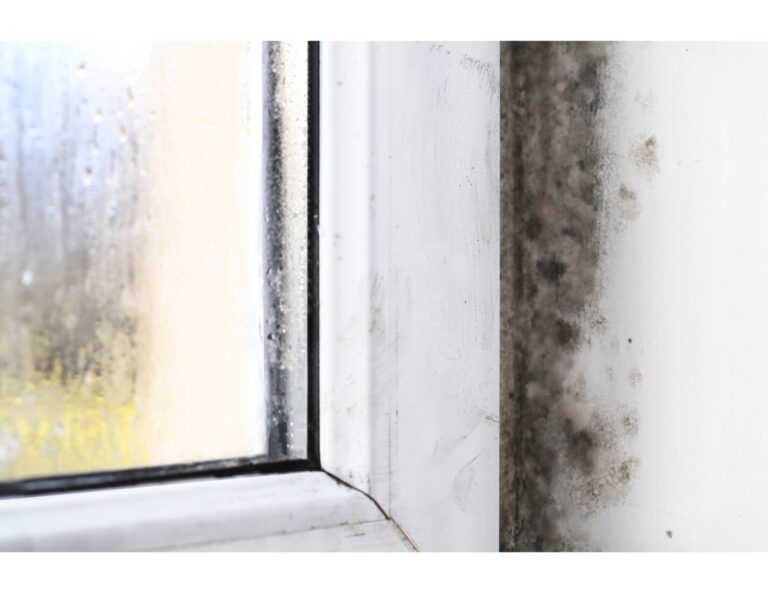Unfortunately, mold loves the dark, moist areas in a house that are often not in plain view, making mold detection challenging. Your home may be, to all appearances, spotlessly clean, and still have a mold problem. Health problems, such as allergies, are often the most compelling sign that your home is a breeding ground for mold, but it would be better to catch it before it gets to that point.
In this article, we look at how to detect mold, what to do about it and when to call in the experts.
What Mold is and How it Grows
Mold spores are always present in the air we breathe. It is only when they find the perfect conditions to take root, spread and produce an unmanageable quantity of spores, that they become a problem for people. Mold will grow very quickly when the conditions are right: a warm temperature (between 77 and 86 degrees Fahrenheit), when it has a suitable carbon-based material on which to grow (wood, drywall, paper, carpet and other natural fabrics), and when there is a high amount of moisture present. Mold is often found in poorly ventilated, humid areas such as basements, bathrooms, kitchens, crawlspaces and around plumbing.
Warning Signs Your Home Has a Mold Problem
Now that you know the conditions for mold growth, you probably have a good idea of where to start looking. Below, we’ll provide a few tips on what specifically to look for.
1. Visible Mold
Sometimes the mold is out in the open and easily seen. There are over 100,000 species of mold in the world, and it comes in a wide range of colors and textures. The most common molds are gray, black or green, but mold can also be white, pink, blue, brown or a combination. Texture-wise, mold can be fuzzy, powdery or slimy. Mildew is also a mold which is powdery and a light gray or white color.
Keeping in mind that mold likes moisture, regularly inspect high humidity areas such as:
- Attics and basements
- Crawlspaces
- Window sills and door frames
- Bathroom and kitchen gout and calk
- Beneath sinks
- Carpeting (Pay attention to spots, odors and stains. Check both sides of the carpet if possible)
- Closets (check your clothes and shoes for white or black fluffy or slimy spots if they are kept in an enclosed, humid area)
- Upholstered furniture
- Appliances
- Water heater tank/closet
2. Staining
Mold can also grow inside a wall or ceiling. The main sign you have a mold growth behind wallpaper, the drywall backing or inside the wall is a discoloration of the surface. If you had a leak above, check the ceiling below for any sign of dark stain that could be a sign that mold is growing between the floor above and the ceiling below.
Signs of a smaller, possibly intermittent leak will appear as a line outlining the edge of the water pool. If there were multiple leaks, the lines would look like concentric rings around a central point. These could be an indication of a growth of mold on the backing of the drywall.
Check other surfaces for staining as well, such as the wood veneer of bathroom or kitchen cabinetry. Air vents in the ceiling or floors could have black spots caused by too much humidity in the air system.
3. Warped Walls and Bubbling or Peeling Paint
Warped walls or bubbling and peeling paint could also be a sign that moisture has penetrated the wall. If this is the case, it will most likely have settled near the base of the wall or the baseboard. When you remove the baseboard you will probably find mold growing on the drywall, or in the cavity behind the drywall.
4. Condensation on Windows or Walls
Condensation occurs when warm, humid air comes in contact with a colder surface. This is typically seen as droplets on windows or walls. But it can also occur around the refrigerator, freezer or air conditioner coils. Remember that high humidity is the critical factor that allows mold to proliferate. If you don’t yet see mold in these areas, you likely will soon, so steps should be taken to rectify the situation.
5. Leaks in the Plumbing
If you’ve had a major leak such as a burst pipe, pay special attention that mold does not grow once it is cleaned up. More insidious are the slow leaks that could be causing havoc without you even noticing. Check under sinks often for the dampness that creates the perfect conditions for mold.
6. Musty Odor
Often mold is growing in a place that is difficult to see, but the smell will be undeniable. Some people describe it as ‘musty’, or ‘earthy’, ‘like a wet towel’ or ‘stale’. Toxic mold has a specific smell that some people describe as like ‘sweaty socks’. In any case, a musty smell is a sign that mold is actively growing and multiplying somewhere in your home.
7. Off-tasting Coffee
If mold has gotten into your appliances such as your coffee maker, water filter system or blender, your drinks and food will taste funky.
8. Allergies
Some people are more sensitive to mold than others. If anybody in your home starts exhibiting persistent allergy symptoms such as shortness of breath, sneezing, coughing or rashes, check your home for mold. A more severe reaction could include symptoms such as joint, muscle and/or nerve pain, headache and brain fog, as well as more frequent colds and flu.
Tips to Combat Mold
Since moisture is the key ingredient that turbocharges mold growth, any preventative and restorative measures will involve reducing humidity.
- Use a dehumidifier if your home is extremely humid (over 50%), and make sure your home is well ventilated
- Check plumbing regularly and fix any leaks right away
- Keep roofs repaired and gutters free of debris
- Wipe up and dry any spills right away and make sure your clothes are completely dry before storing them in closets
- Clean all appliances regularly
- Use high quality HEPA filters in your air conditioner
If you have a large amount of mold — more than 10 square feet — call a professional mold remover like Florida Gulf Mitigation. If you attempt to clean large areas of mold you could end up spreading it instead. Florida Gulf Mitigation has the knowledge and equipment to track down the causes of the mold and will be able to contain and eliminate it safely and efficiently.







Give us a follow!